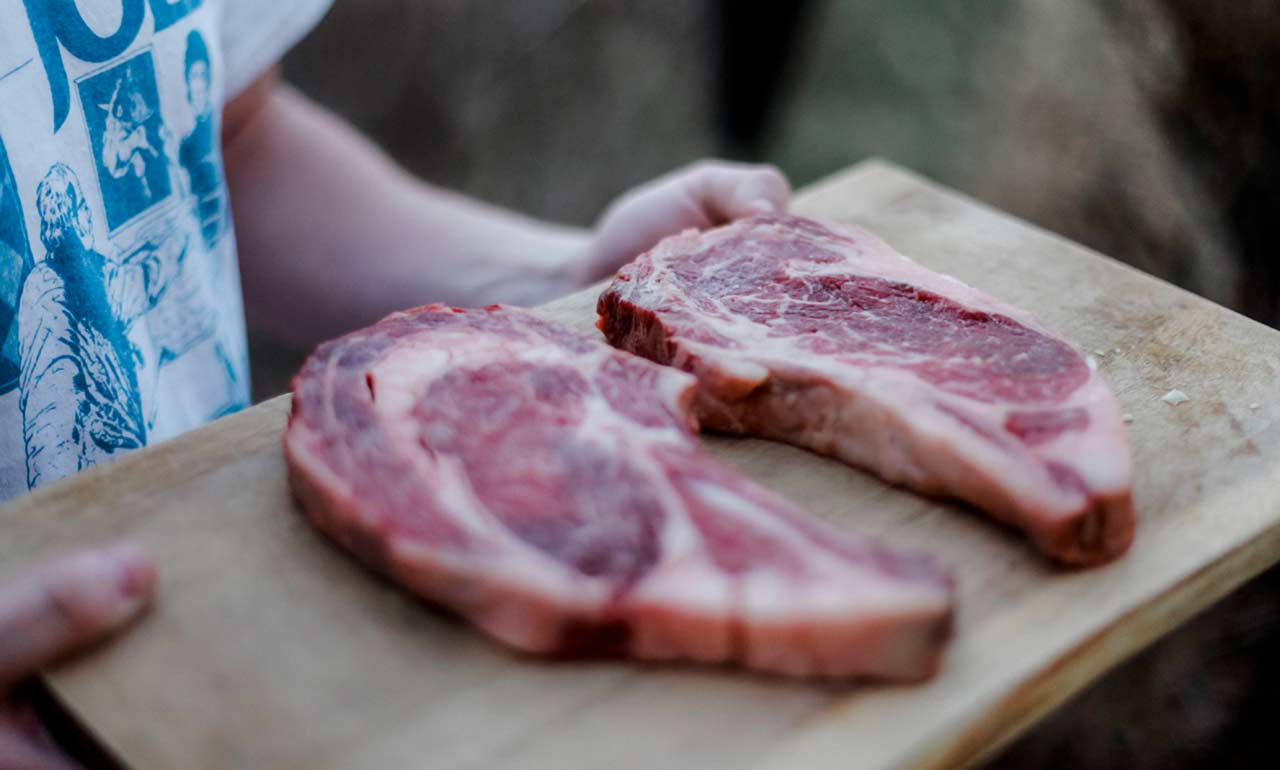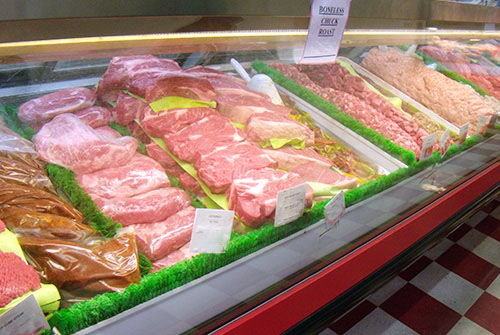Reveal the Art of the Butcher's Cut in a Modern Meat Market
In the ever-evolving landscape of modern-day meat markets, the butcher's cut has actually transcended its conventional roots, merging olden craftsmanship with contemporary practices. What truly sets the modern butcher apart is their capacity to build a much deeper link in between consumers and the origins of their meat.
Evolution of Butchery Strategies
The development of butchery techniques mirrors a rich tapestry of advancement and adjustment driven by advancements in technology, changes in customer demand, and a much deeper understanding of meat science. Historically, butchery was a craft passed down via generations, with techniques developed over centuries to make the most of yield and flavor. Nonetheless, the industrial transformation introduced mechanization, changing typical techniques and making it possible for massive processing.
The mid-20th century saw butchery techniques better refined by scientific insights into muscle biology and meat aging, boosting both inflammation and taste. Technologies like vacuum packaging and refrigeration expanded item shelf-life, enabling butchers to expand offerings and boost quality assurance. This period also noted the surge of specific tools, such as band saws and meat slicers, which increased accuracy and effectiveness in meat processing.

The 21st century has actually presented digital innovation right into the butchery world. Computerized systems currently aid in tracking animal provenance and maximizing cuts to satisfy particular customer preferences. Additionally, a rebirth in artisanal butchery has arised, mixing conventional abilities with contemporary knowledge to deal with consumers looking for honest and sustainable meat alternatives. This evolution highlights a vibrant interplay between custom and development, conference contemporary needs while maintaining the craft's heritage.
Understanding Meat Cuts
Understanding the intricacies of meat cuts is essential for both butchers and consumers seeking top quality and worth. Each cut originates from a various part of the animal, imparting distinct tastes, appearances, and food preparation approaches - bagley farms meat market edwardsville il. Mastery of these differences not only boosts culinary experiences but also makes best use of the energy of each carcass. For butchers, accurate cuts show skill and respect for the craft, ensuring marginal waste and ideal yield.

Comprehending muscular tissue structure is crucial; muscular tissues utilized more often by the pet have a tendency to be tougher and are best fit for slow-moving cooking methods, while less-used muscle mass, like those discovered in the loin, are extra tender and suitable for barbecuing or roasting. Experience with these differences encourages consumers to make educated selections, enhancing their culinary endeavors.
Picking Top Quality Meat
Choosing the appropriate meat entails more than simply choosing an aesthetically enticing piece from the display screen. The art of picking quality meat needs a discerning eye and expertise of details characteristics that signify quality and excellence.
Secondly, take into consideration the marbling, which describes the white flecks of fat within the muscle. Proper marbling is a key indication of inflammation and flavor, as it thaws during cooking, improving the meat's juiciness. Keep in mind, greater marbling usually associates with premium top quality cuts, such as USDA Prime.
Texture is another critical variable; meat needs to feel firm to the touch, not slimy or excessively soft. Additionally, bear in mind the fragrance. Fresh meat must have a tidy, go neutral scent, complimentary from any type of sour or off-putting smells.
Combining Cuts With Food Preparation Techniques

On the other hand, tougher cuts like brisket and chuck roast are rich in collagen, which breaks down right into jelly when prepared slowly. These cuts are perfect for braising or sluggish roasting, allowing the meat to soften in time and develop deep, intricate tastes. Similarly, cuts such as brief ribs and pork shoulder prosper with slow-cooking methods, where expanded cooking times change their robust appearances into succulent dishes.
Lamb shanks and oxtail, which call for extended cooking to tenderize, are excellent prospects for stewing or slow-moving simmering. These methods coax out abundant, hearty flavors while keeping wetness. By understanding the special attributes of each cut, cooks and home cooks alike can raise their culinary productions, guaranteeing each recipe is both satisfying and unforgettable.
The Butcher's Function Today
Browsing the developing landscape of the modern-day meat market, the butcher's duty today prolongs beyond mere preparation of cuts. Contemporary butchers are cooking craftsmens, teachers, and advocates for lasting techniques. They bridge the void in between the ranch and the fork by ensuring honest sourcing, recognizing pet husbandry, visit the site and focusing on openness in the supply chain. This change mirrors the expanding customer demand for high quality over amount, where provenance and animal welfare are critical.
Along with crafting specific cuts, butchers now engage straight with clients, using cooking guidance and tailoring options to suit individual needs and preferences. Their expertise in meat aging, marbling, and flavor profiles empowers customers to make enlightened decisions, boosting their culinary experiences. This tailored service exemplifies the butcher's progressing role as a relied on expert in the cooking area.
Additionally, butchers are pivotal in minimizing waste, using whole animals to produce diverse products such as sausages and stocks. This thorough technique not just values the animal however additionally aligns with contemporary sustainability goals. By doing this, the contemporary butcher symbolizes both custom and innovation, adjusting to an ever-changing market while maintaining the creativity and stability of their craft.
Conclusion
The modern butcher's craft delicately weaves traditional methods with modern-day technologies, stressing sustainable methods and ethical sourcing. Mastery navigate here in understanding diverse meat cuts and quality indicators empowers butchers to supply informed suggestions, aligning details cuts with optimum food preparation techniques. This expertise not just boosts cooking experiences yet likewise reinforces the link in between customers and the beginnings of their food. By honoring historical practices while welcoming modern demands, the butcher's function stays crucial in today's sophisticated meat market (bagley farms meat market edwardsville il).
Comments on “Why Bagley Farms Meat Market Edwardsville IL Is the Best Selection for High Quality Meats”